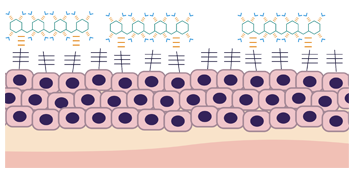What is Mucosamin?
Targeted treatment for mucositis
Mucosamin helps to treat and relieve the symptoms of mucositis, caused as a result of cancer therapies such as chemotherapy and radiotherapy.
Mucosamin protects the healthy oral mucosa, whilst providing pain relief and promoting wound healing of painful lesions.





